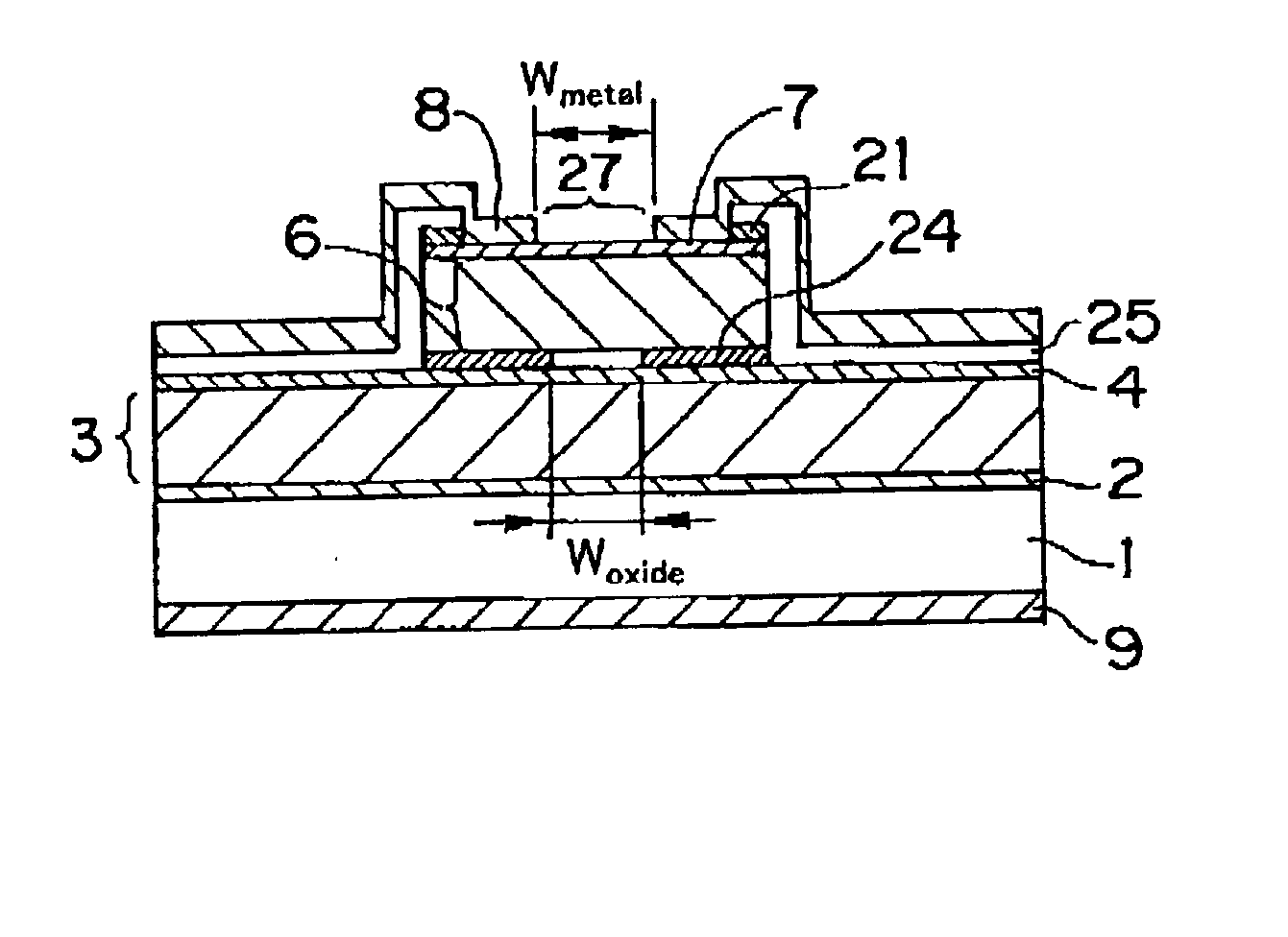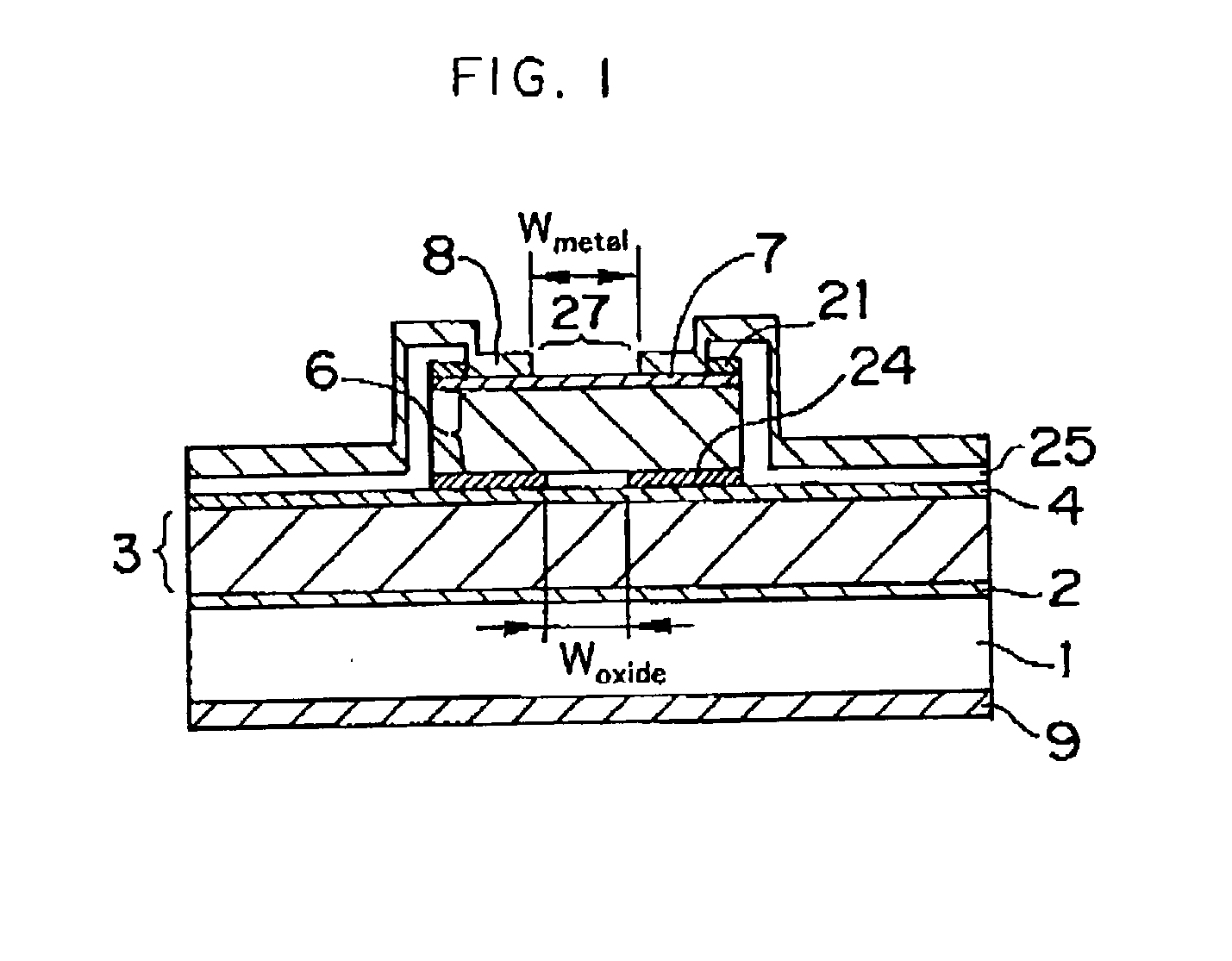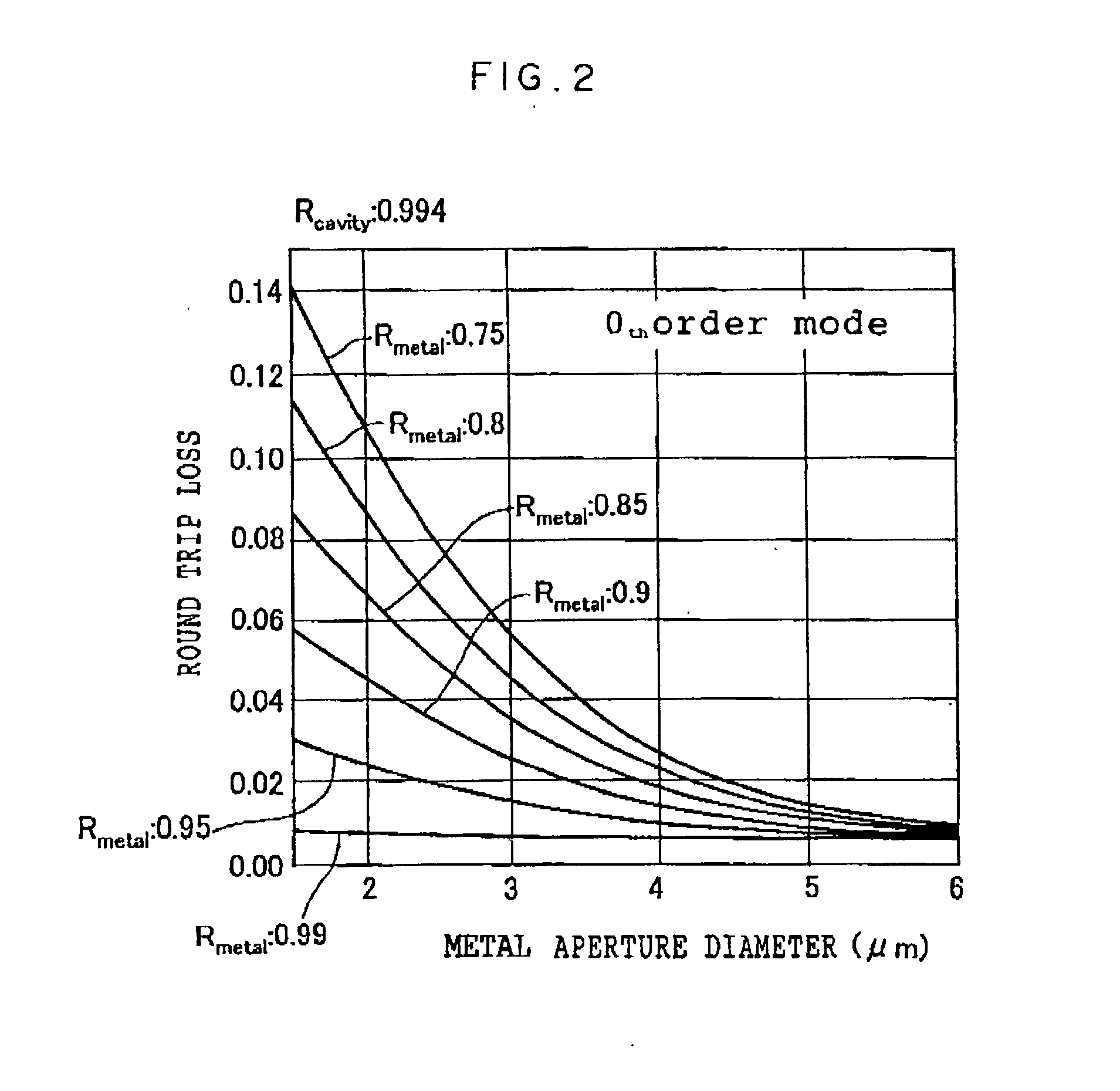Surface emitting semiconductor laser
- Summary
- Abstract
- Description
- Claims
- Application Information
AI Technical Summary
Problems solved by technology
Method used
Image
Examples
first embodiment
[0107] First Embodiment
[0108] A structure of a VCSEL relating to a first embodiment of the present invention will be explained with reference to FIGS. 5A to 5G that illustrate a manufacturing process of the VCSEL.
[0109] As illustrated in FIG. 5A, using a metal organic chemical vapor deposition (MOCVD) method, an n-type GaAs buffer layer 2, a lower n-type DBR layer 3, an active region 4, a p-type AlAs layer 5, an upper p-type DBR layer 6, and a p-type GaAs contact layer 7 are sequentially layered on an n-type GaAs substrate 1.
[0110] The n-type GaAs buffer layer 2 has a film thickness of 0.2 .mu.m, and is composed of n-GaAs having a carrier density of 1.times.10.sup.18 cm.sup.-3 after doping Si as an n-type impurity. The n-type GaAs buffer layer 2 fulfills a role of smoothly advancing an epitaxial growth including Al thereafter.
[0111] The lower n-type DBR layer 3 is a plural-layer layered product having alternately layered by 40.5 cycles n-type Al.sub.0.9 Ga.sub.0.1As and n-type Al.su...
second embodiment
[0126] Second Embodiment
[0127] A VSCEL relating to a second embodiment of the present invention will be explained next. In the first embodiment, a description has been made of the behavior of the fundamental lateral mode optical output power when the metal aperture diameter is changed by assuming that the aperture diameter of the current confinement portion is 3.5 .mu.m. In the second embodiment, the dependency of the fundamental lateral mode optical output power on the metal aperture diameter when the aperture diameter of the current confinement portion is changed will be explained. The structure of the laser itself remains unchanged from that of the first embodiment and therefore, the explanation of the laser will be omitted here. Elements having the aperture diameter of the current confinement portion as 3 .mu.m, 4 .mu.m and 5 .mu.m are manufactured by adjusting the heat treatment time for selectively oxidizing the AlAs layer 5.
[0128] FIG. 8 shows a result of an electrooptic eval...
third embodiment
[0135] Third Embodiment
[0136] A VCSEL pertaining to a third embodiment of the present invention will be described. In the first and second embodiments, examples have been given in which, by using two kinds of electrode materials. Ti and Au, administering an EB deposition at a film thickness of 10 nm for Ti and 30 nm for Au, and thereafter performing a heat treatment at an environmental temperature of 350.degree. C. for ten minutes, the upper electrode is formed and the reflectance of the cavity of the region corresponding to the upper electrode is lowered. With the exception of conditions for forming the upper electrode, the present embodiment is similar to the first embodiment, and because the structure of the laser itself is the same as that described in this first and second embodiments, description thereof will be omitted.
[0137] Methods for lowering the reflectance of a cavity by providing the upper electrode include, for example, the following two methods.
[0138] (1) A method in...
PUM
 Login to View More
Login to View More Abstract
Description
Claims
Application Information
 Login to View More
Login to View More - R&D
- Intellectual Property
- Life Sciences
- Materials
- Tech Scout
- Unparalleled Data Quality
- Higher Quality Content
- 60% Fewer Hallucinations
Browse by: Latest US Patents, China's latest patents, Technical Efficacy Thesaurus, Application Domain, Technology Topic, Popular Technical Reports.
© 2025 PatSnap. All rights reserved.Legal|Privacy policy|Modern Slavery Act Transparency Statement|Sitemap|About US| Contact US: help@patsnap.com



